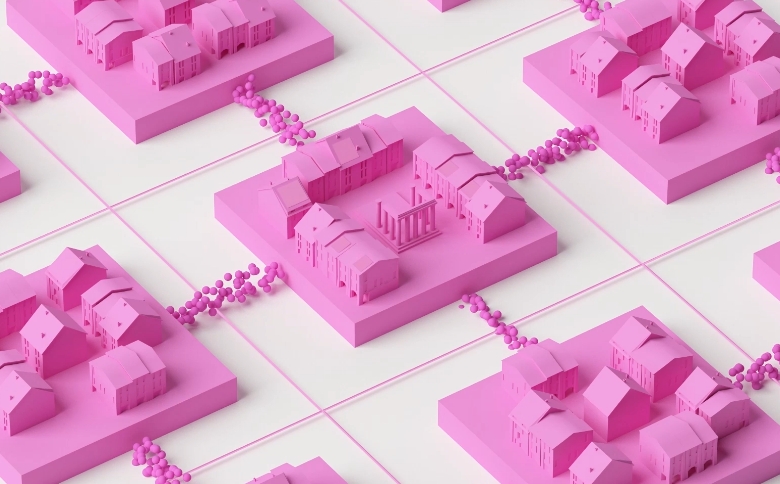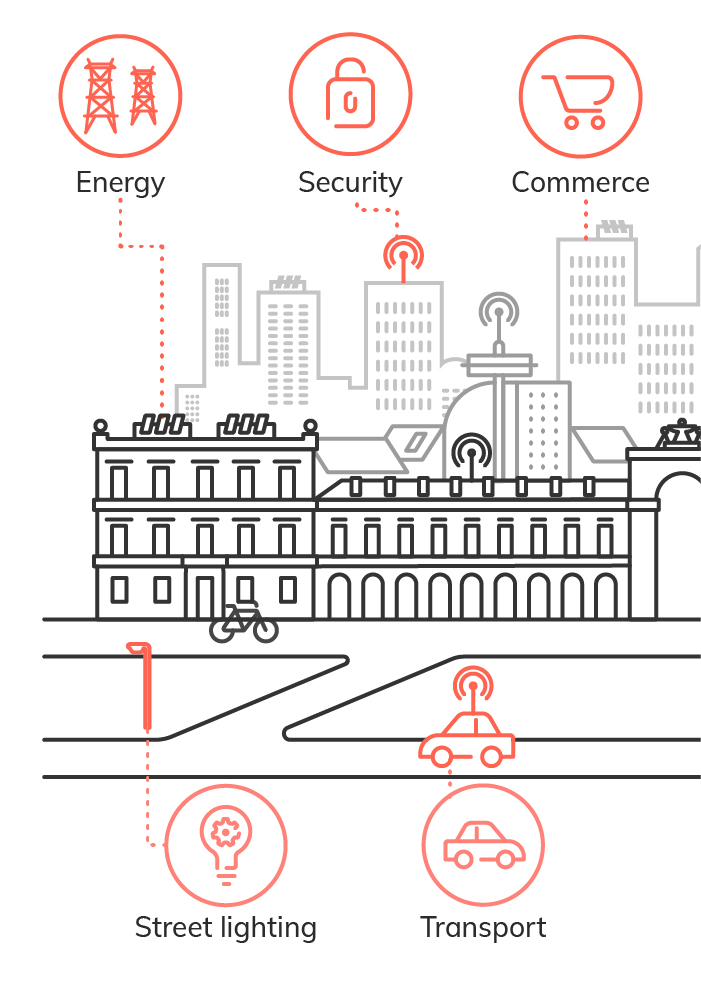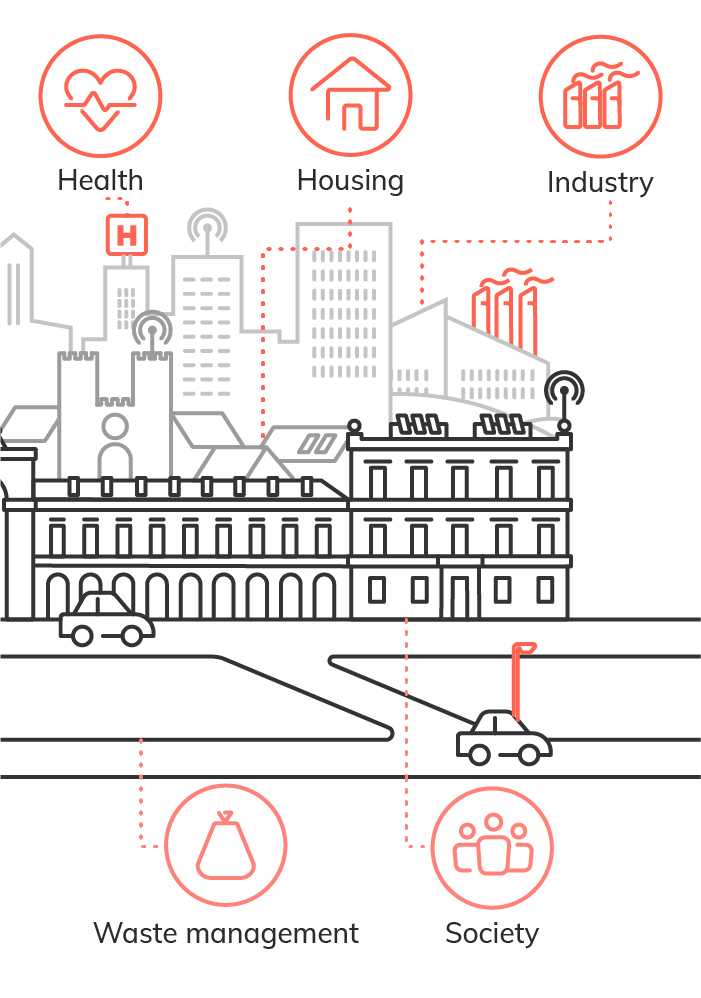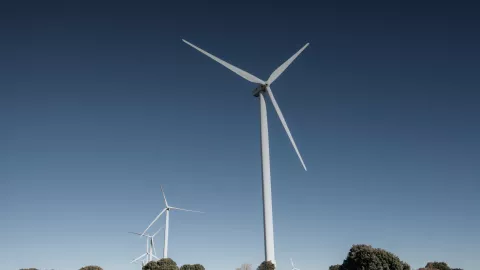The role of smart cities on carbon neutrality
They represent only 3% of the planet's surface, but they are increasingly inhabited. Cities assume the important role of moving towards a more sustainable and inclusive future, always hand in hand with citizens.
According to data from the UN (United Nations), it is estimated that, in 2050, more than six billion people will live in cities, 70% of the world's population. This poses an even greater challenge, since 2050 is precisely the date set by the member states of the European Union to fulfill the objectives of carbon neutrality. The pace of urbanization continues to accelerate. 60% of the world's wealth is produced in cities and urban areas, but to that end they use between 60 and 80% of the energy that the world produces.
It can even be said that the city is the most human ecosystem on the planet, where humans grow, evolve and transform their lives. The city is the stage for great innovations and decisions that changed the course of history. But most of the time, this is done at the expense of an increasingly bigger carbon footprint, in a very disproportionate way, to raise the resources it needs, with dramatic losses to the environment. It is therefore urgent to promote sustainability in urban areas. Today, it is no longer a mere option, it is a necessity if we want cities to have a future.
This is one of the great challenges that cities face today: to find the balance between what they receive and what they give to nature. In the future, cities too must generate their own contributions, without depending so much on the environment. Could it be that the only way to produce such wealth is to consume so many resources? No, and that is why it is urgent to rethink these spaces, give them intelligence, without losing the comfort and well-being with which they welcome their residents.
What are smart cities?
The European Union defines smart cities as places “where traditional networks and services become more efficient, with the use of digital technologies for the benefit of their inhabitants and companies.”
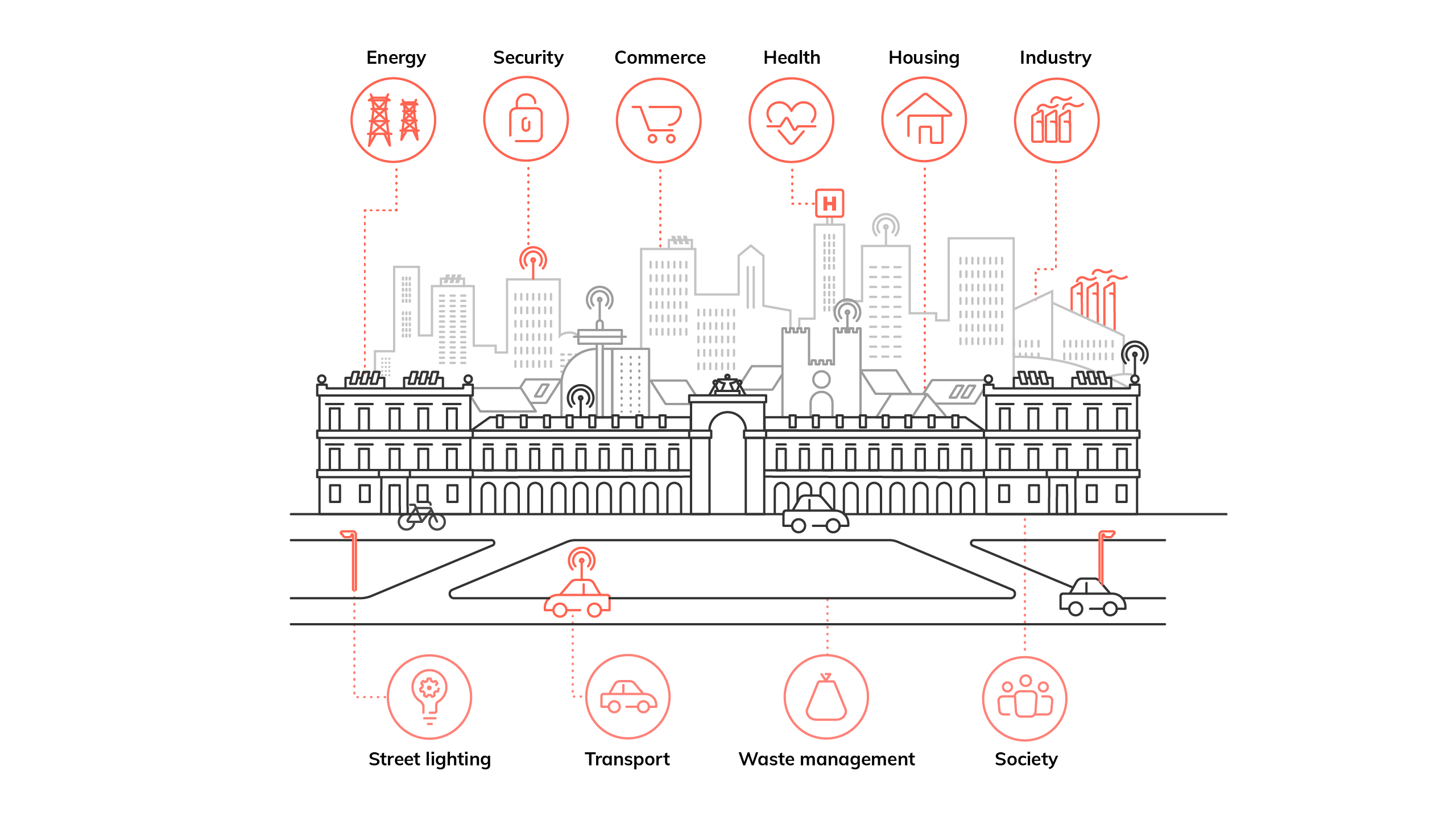
In addition, a smart city also means a more interactive, preventive, and reactive municipal administration, which better serves its population in multiple domains:
- Co-designing spatial planning solutions with citizens, such as mobility, energy, supply, among others;
- Transport and mobility networks more suited to the needs of people and territory and more sustainable, taking advantage of intelligent systems;
- Water supply facilities with less losses;
- Sustainable waste management aiming at circularity;
- Energy efficiency in heating and cooling buildings, and lighting.
We can say that this is one of the most common definitions of a smart city. But there are many others. José Campos Costa, responsible for the Comunidades Energeticamente Positivas area at EDP NEW, adds that ''it is a city that listens to its citizens, allowing them to be demanding in their needs, and is able to answer them. A city that leads to the empowerment of its citizens, who have the tools to take on a more active and engaged role, in an harmonious cycle.'' José Campos Costa recalls that ''some people say that an intelligent city is an abstraction, others that it is a purely technological concept,'' but he believes that ''it should be much more than that. I would even say that it is an ancient ambition, which was born long before the dawn of technology.'' But is it easy to equip cities with intelligence? The challenges are enormous, but the opportunities are not lacking either.
The main challenges of contemporary cities
POCITYF: the path to energy transition
POCITYF (Positive Energy CITY Transformation Framework) is a smart cities and communities project led by EDP Labelec and EDP NEW. It has a budget of €22.5 million and lasts for five years (2019-2024), in a consortium formed by 13 countries: Portugal, Spain, Italy, Germany, Greece, Netherlands, Slovenia, Hungary, Denmark, Finland, Austria, Belgium and Switzerland.
Creating a set of Positive Energy Blocks - geographically delimited areas with local renewable energy production exceeding consumption, in terms of annual average - is the objective of this project, which has Évora (Portugal) and Alkmaar (Netherlands) as pilot cities.
“POCITYF is a project that will help to answer the difficult question of how we can make cities with valuable historical heritage, such as Évora and Alkmaar, more sustainable,” explains José Campos Costa. And why? ''Because in these areas there are more restrictions, in order to protect this heritage, which prevents the installation of more conventional solutions (such as photovoltaic panels) in order to protect of the architectural and cultural landscape. The challenge thus becomes much greater for the city itself, which will have to be endowed with innovative tools that enable citizens to make the energy transition, as inhabitants of these areas.”
Classified by UNESCO as a World Heritage Site, Évora was chosen to be part of this project not only because of its historical component, but also because it was the first city in Portugal to have an intelligent distribution network, through E-Redes' InovGrid project. This also led to Évora being the stage for InovCity, a smart cities system focused on smart networks.
Three Positive Energy Blocks will then be created in Évora during POCITYF: one housing the entire historic center; the second based in the village of Valverde (where prior innovative projects such as SENSIBLE and InteGrid took place); and the last located in the industrial area on the outskirts of the historic center.
Like POCITYF, SPARCS will also be demonstrated in two pilot cities: Espoo (Finland) and Leipzig (Germany), and in five other cities: Reykjavik (Iceland), Maia (Portugal), Lviv (Ukraine), Kifissia (Greece), and Kladno (Czech Republic).
On the other hand, Sharing Cities, whose pilot cities are Lisbon's downtown, in Portugal, London, in the United Kingdom, and the Porta Romana in Milan, Italy, aims for the development of larger-scale smart cities in Europe, through solutions that can be integrated into complex urban environments and based on common needs. Thus, the aim of this project is to prove that the integration of information and communication technologies can improve and connect the existing infrastructure, as well as create new infrastructures in the city. The project will also allow the development and testing of business, investment and governance models, which are essential to achieve the aggregation and replication of different smart cities, with different sizes and maturity. The project will reinforce the mechanisms to engage citizens, with effective sharing and collaboration between them and local governments. The first collective self-consumption installation, which will facilitate the shared use of renewable energy and solidarity, arrives from Spain. Barrio Solar is an innovative concept of distributed energy generation, with the installation of photovoltaic panels on the roof of a municipal building in Zaragoza to offer residents and local businesses cheaper and renewable energy. This solar neighborhood will then be extended to other Spanish locations and will save almost 40,000 kilos of CO2 in the emission of greenhouse gases into the atmosphere.

''I see POCITYF as a link between past and future, preserving the former while stimulating the latter''
José Campos Costa,
Head of Positive Energy Communities na EDP NEW
Other smart city projects
SPARCS is another H2020 project which presents innovative solutions for intelligent and integrated energy systems without carbon dioxide emissions. In addition to improving the quality of life of citizens, this smart cities project allows for an advanced qualitative and quantitative diagnosis of the city, through a series of actions: the participation and co-development of solutions by local stakeholders, digital integration, and the development of innovative business models, integrated urban planning, among others. City Vision 2050 is based on the city of the future as imagined by local stakeholders and based on blocks of positive energy that are carbon-neutral. This vision is been developed together with local stakeholders and under the sponsorship and coordination of the Municipality of Maia, with several working sessions being held. More than a project for the development and application of technology in smart cities, SPARCS has proved to be an extremely successful experience of joint work between different entities and nationalities, fostering and sharing advanced skills, co-creating solutions that address current, complex challenges. In short, “it fulfills the objective that the European Union established when it created the H2020 program: building a society and an economy based on knowledge and innovation,” says Luísa Serra, SPARCS project manager.
In parallel with the working sessions involving stakeholders, NEW developed a tool that consisted of a methodological work for replication and scaling of complex and integrated solutions. ''The tool that was developed allows us to systematically address the main challenges that cities are currently facing, supporting investment decisions such as those envisaged in the next community support framework,'' adds Luísa Serra.

